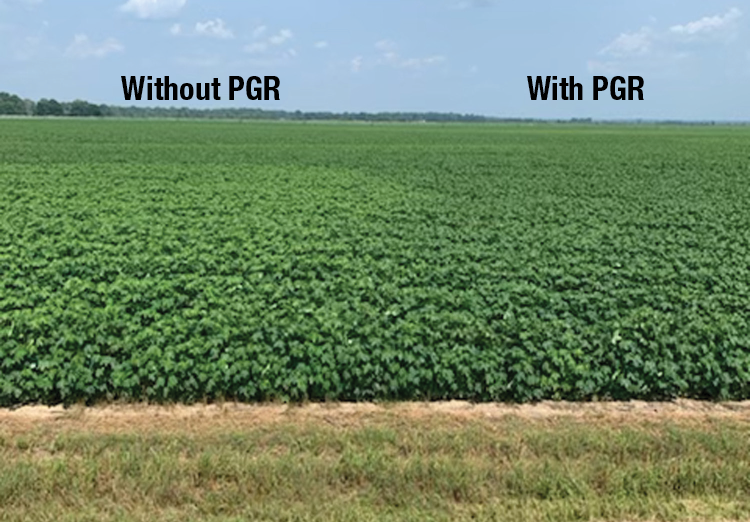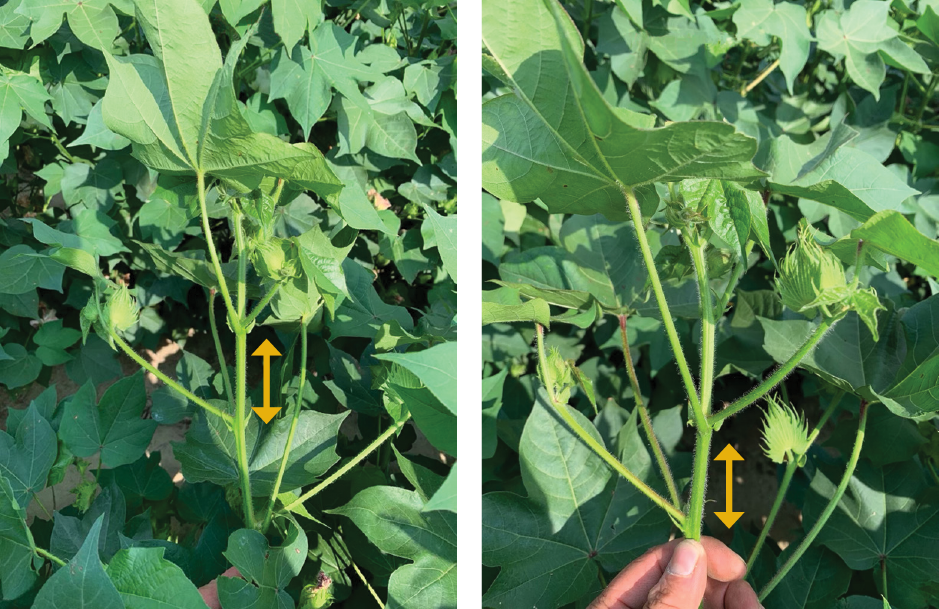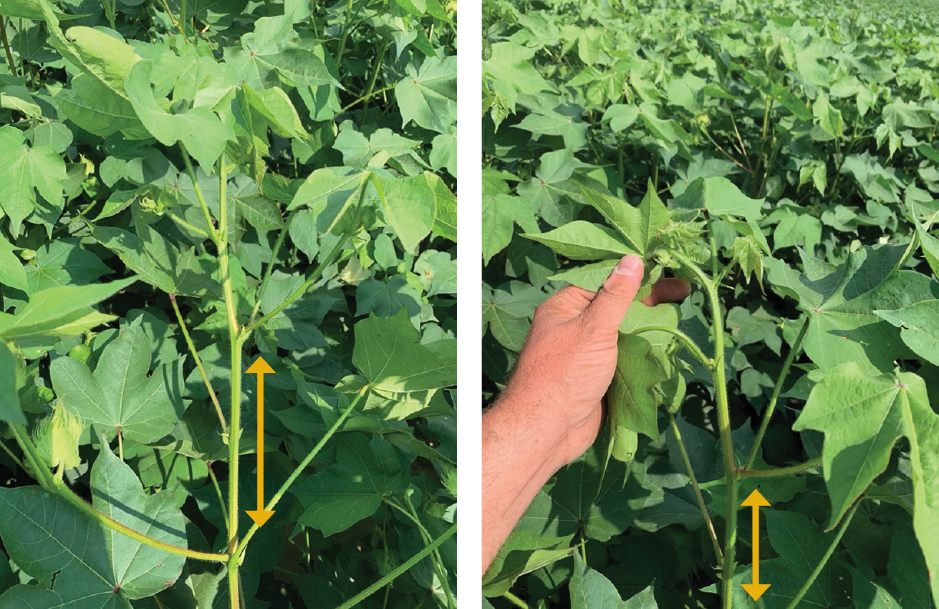Plant Growth Regulators (PGRs) in Mississippi Cotton
Mississippi cotton growers often experience challenges during the early season.
Farmers deal with weather extremes, including excessively cool or warm weather, excessive rainfall and flooding, and drought in some years. These conditions could plague cotton from late April through mid-June. As a result, cotton often suffers root-development issues, reduced plant stature, and delayed maturity. These setbacks complicate management strategies as the crop advances into the reproductive stages.
Plant bug infestations in cotton typically increase through mid- to late bloom, which normally reduces square retention. This reduced retention generally increases vegetative growth; however, when cotton experiences environmental challenges, growers should consider a few things while making plant growth regulator (PGR) applications.
The key purpose of plant growth regulators is to manage cotton internode length for a more efficient plant to improve production. Varietal growth habit and vegetative potential are paramount in making PGR decisions. Vegetative potential is the ability to produce abundant vegetative biomass.
Cotton varieties differ widely in terms of height and responsiveness to PGRs. The main goal is to monitor the length between the fourth and fifth nodes down from the terminal and strive to maintain an optimal distance of 2–3 inches.
Cotton growth varies greatly across fields and even within fields. Variable-rate PGR applications help improve crop response because you can treat highly vegetative zones more aggressively and vice versa.
As cotton enters the reproductive growth stages, a solid PGR strategy will limit plant height, improve air circulation through the canopy, increase defoliation efficiency, and enhance harvest efficiency.
Common PGR products are
- 4.2% mepiquat chloride (0.35 lb ai/gal)
- mepiquat pentaborate (9.6% ai/gal)
- mepiquat chloride + cyclanilide (0.184 lb ai cyclanilide/0.736 lb ai mepiquat chloride/gal)
These products perform similarly when applied at appropriate rates. Common use rates for 4.2% mepiquat chloride and mepiquat pentaborate applied pre-bloom range from 4 to 8 ounces, depending on vegetative potential. Using the same products, early to mid-bloom rates range from 8 to 16 ounces per acre and could require additional treatments if vegetative growth continues. Mepiquat chloride + cyclanilide use rates are much lower: cotton is usually treated with 2 to 3 ounces per acre and up to 4 ounces per acre for aggressively growing cotton.
Crop growth depends on calendar date, temperatures, and other environmental factors that are often unpredictable. In some situations, high fruit retention and boll load may act as a natural plant growth regulator. In this situation, excessive PGR applications can halt growth, greatly reducing plant stature. Using a conservative strategy and closely monitoring the internodal distance four to five nodes down from terminal may help avoid this problem.In fields with extreme vegetative variability, base your decisions on the most productive and predominant zones in the field. For example, if 75 percent of the field has high vegetation and is typically very productive, base your management primarily on this zone.
Summary
PGR management must evolve with both varieties and environmental conditions. Therefore, management strategies may vary drastically from year to year and can change during the growing season. Ultimately, the goal is to use plant growth regulators to manage internodal distances and produce a more efficient plant.

Photo courtesy of Jim Sayle, Desoto County, Mississippi.
With PGR

Photos courtesy of Jim Sayle, Desoto County, Mississippi.
Without PGR

Photos courtesy of Jim Sayle, Desoto County, Mississippi.
The information given here is for educational purposes only. References to commercial products, trade names, or suppliers are made with the understanding that no endorsement is implied and that no discrimination against other products or suppliers is intended.
Publication 3729 (POD-11-21)
By Brian Pieralisi, PhD, Assistant Professor, Plant and Soil Sciences.
The Mississippi State University Extension Service is working to ensure all web content is accessible to all users. If you need assistance accessing any of our content, please email the webteam or call 662-325-2262.





